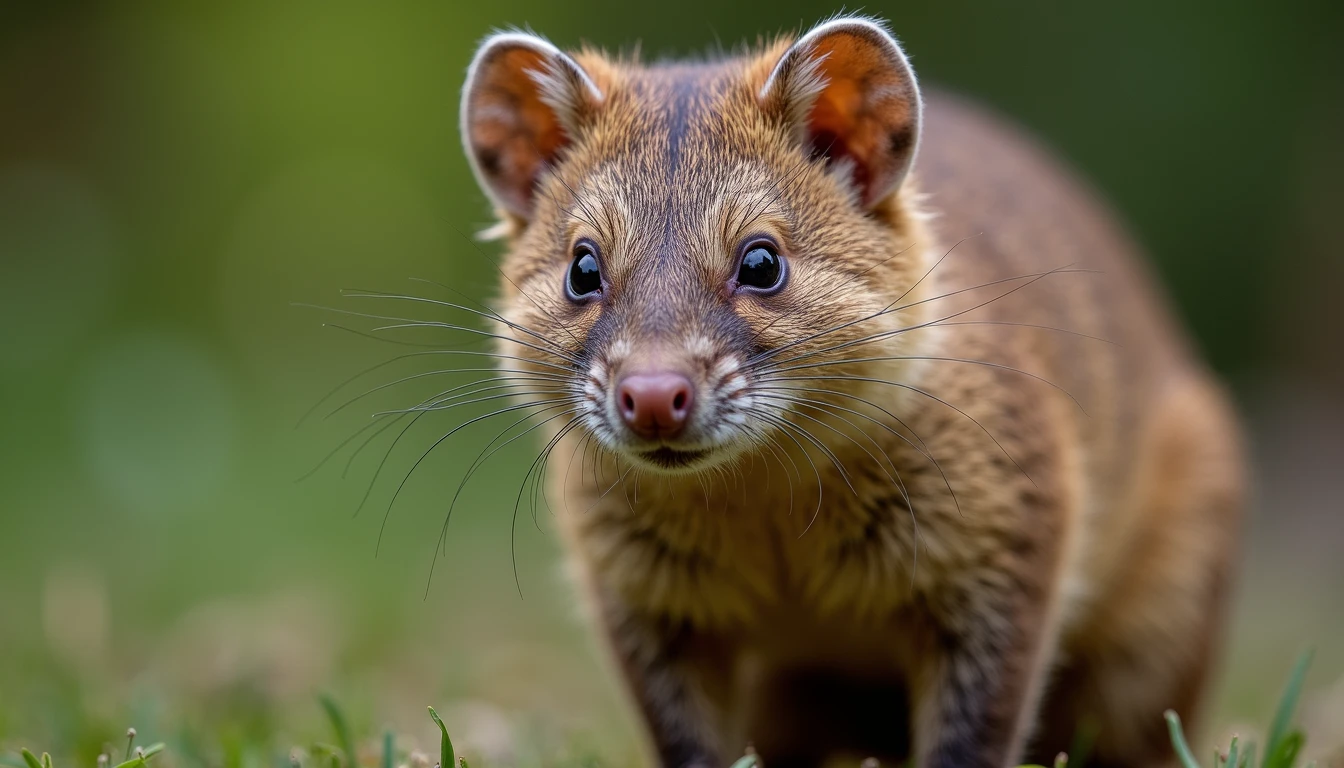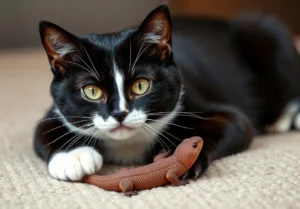Shrews are intriguing little creatures that often pique the curiosity of pet owners, especially those with cats. Their unique characteristics might raise concerns about their impact on feline friends.
Shrews are not poisonous to cats. However, they can carry parasites or diseases that may pose health risks if ingested or improperly handled. There’s a bit more to consider about these small mammals and their interactions with your pets, so if you’re curious about the details, keep reading to uncover essential insights!

What are Shrews?
Shrews might look like small mice, but they belong to a different family entirely. These tiny mammals are characterized by their elongated snouts, which give them a somewhat distinctive appearance. Adult shrews typically measure just 4 to 6 inches long, not including their tails.
Their bodies are rounded and covered in soft fur, often shaded in browns or grays, helping them blend into their natural habitats.
Shrews can be found nearly everywhere, with most species thriving in woodlands, grasslands, and gardens across North America and Europe. They prefer moist areas, often dwelling in leaf litter, beneath bushes, or even in burrows to keep safe from predators. What’s interesting is that shrews are highly active and must eat about 1-2 times their body weight daily since their fast metabolism burns energy quickly.
Their diet mainly consists of insects, worms, and even small vertebrates.
Are Shrews Toxic to Cats?
Shrews possess a notable defense mechanism—salivary venom—which serves primarily to subdue their prey. While this might sound alarming, it’s essential to clarify that shrews are not considered poisonous in the traditional sense.
For cats, interacting with shrews typically isn’t dangerous, though it’s not without potential issues. If a cat attempts to catch and play with a shrew, the animal’s venom might cause irritation or unpleasant symptoms if bitten. Common reactions in cats could include swelling or pain at the bite site, or in rare cases, some gastrointestinal distress. However, fatal outcomes from shrew encounters are exceedingly rare.
Many cat owners might wonder what to watch for. It’s good practice to keep an eye out for changes in your pet’s hunger levels, behavior, or signs of discomfort after a potential encounter with a shrew. If any severe symptoms arise—like persistent vomiting or lethargy—consulting a vet is a wise step.
So, while shrews may carry some venom and can be a source of mild irritation for cats, they don’t pose significant health risks. Just keep your furry friend away from these little critters, and all should be well!
What Risks Do Shrews Pose to Cats?
Shrews aren’t venomous, but that doesn’t mean they’re harmless. While your cat might be curious about these small, quick creatures, there are a few health risks to consider. Shrews can carry parasites like ticks and fleas, which can transfer to your feline friend.
These parasites pose health risks to cats, as ticks can transmit diseases such as Lyme disease and cytauxzoonosis. Fleas not only cause irritation but can also lead to more serious conditions like anemia and tapeworm infections if ingested during grooming. It’s important for cat owners to monitor their pets and maintain a regular antiparasitic treatment regimen to prevent infestations.
If your cat catches a shrew, it might end up with gastrointestinal issues from ingesting the animal, even if it’s not toxic. Some shrew species also secrete toxins to help with prey immobilization, but these are not life-threatening to cats. Ingesting a shrew could still lead to vomit, diarrhea, or worse.
A visit to the vet is a good idea if your cat shows any unusual symptoms after interaction with one.
How to Safely Handle Shrews Around Cats
Keeping shrews at bay is crucial for your cat’s health. Here are some practical tips to ensure your furry friend stays safe:
-
Secure Your Yard : Clear away debris, cut back tall grass, and eliminate potential hiding spots like woodpiles. A tidy yard is less inviting to shrews.
-
Use Fencing : If you’re serious about prevention, consider installing a fence that goes underground. Shrews are diggers, so adding a few inches below ground level helps.
-
Monitor Outdoor Time : Keep an eye on your cat while they’re outside. Supervised playtime can help you quickly intervene if they spot a shrew.
-
Provide Enrichment Indoors : Keeping your cat stimulated indoors can reduce their desire to explore outside, where encounters with shrews are more likely.
-
Consult with a Vet : If you suspect your cat has been in contact with shrews, a quick vet visit can help head off any health concerns.
By taking these steps, you can create a safer environment for your kitty and minimize the risks posed by shrews.
What Should You Do If Your Cat Eats a Shrew?
If your cat munches on a shrew, don’t panic. Shrews aren’t usually poisonous to cats, but it’s still smart to keep an eye on your furry friend.
Start by observing your cat for any unusual behavior. Signs to watch for include vomiting, diarrhea, lethargy, or changes in appetite. If you notice any of these symptoms, it’s a good idea to call your vet for advice.
Keep in mind that shrews do have some venomous species, but it rarely affects cats. However, if your cat shows symptoms of distress or seems unwell after eating a shrew, seek professional help immediately. Ensure your cat is hydrated and monitor its health closely for the next 24 hours. Being proactive is key!
Are There Any Similar Animals that are Poisonous?
There are several small critters that might be confused with shrews, and some can indeed be toxic to cats.
Mice and voles are common companions in your garden and can sometimes carry diseases but aren’t venomous.
On the other hand, poisonous toads and some snakes should be on your radar, especially in certain regions. Cats might try to play with or catch these animals, exposing them to potential toxins. Be cautious—if your cat has a taste for small wildlife, knowing the difference can keep them out of harm’s way.
To understand the potential dangers, consider the characteristics of small creatures that may resemble shrews. For example, assess the local wildlife: if you find animals like the Eastern Small-footed Bat, which, while not toxic itself, can carry diseases harmful to cats, or the Common Toad, which is poisonous. Understanding the features and behaviors of these animals can help differentiate them from shrews and mitigate risks.
Identifying potentially dangerous animals near your location can be as simple as checking local wildlife guides or resources online. Keeping your outdoor cat supervised can significantly reduce risks associated with these encounters.
Interesting Facts About Shrews
Shrews may be small, but they pack quite a punch in the animal kingdom. Some species, particularly the European water shrew and North American eastern mole shrew, produce venom. This is used mainly for paralyzing their prey rather than harming predators. While their venom is potent for capturing insects or small rodents, it’s not harmful to larger animals like cats.
In terms of behavior, shrews are incredibly active creatures; they can consume up to 1.5 times their body weight in food daily. They have a high metabolism and often forage around the clock, which is why you might spot them during the day or early evening. Fascinatingly, recent studies suggest that some shrews may engage in social grooming, which seems to play a role in bonding. This behavior reflects a level of social structure not often attributed to such small mammals.
How to Deter Shrews from Your Property
Keeping shrews at bay can be a straightforward process. Start by removing food sources; that means cleaning up fallen fruits, securing trash bins, and limiting birdseed. Shrews love eating insects, so keeping your garden tidy and using natural insect repellents can help, too.
Consider these additional tips:
-
Seal Entry Points : Ensure that any cracks or openings around your home are tightly sealed. Shrews can squeeze through surprisingly tiny spaces!
-
Maintain Your Yard : Regularly cut back overgrown plants and tall grass. Shrews prefer areas with thick vegetation for cover.
-
Use Repellents : Certain natural repellents, like peppermint oil or castor oil, can discourage shrews from entering your space.
-
Encourage Natural Predators : If possible, attract animals like owls or hawks to your yard. They will help keep the shrew population in check without the need for harsher measures.
By implementing these strategies, you can help create an environment that’s less appealing to shrews, keeping your cat safe and sound.
Alex, a passionate animal lover, has experience in training and understanding animal behavior. As a proud pet parent to two dogs and three cats, he founded AnimalReport.net to share insights from animal experts and expand his knowledge of the animal kingdom.




